5 Play to Win
Synthesize your analysis and vision into a winning content strategy.
STRATEGY IS THE STARTING POINT FOR A TRANSFORMATION THAT NEEDS TO OCCUR AND HOW THAT COMPANY MUST CHANGE TO WIN.
—Lynne Doughtie
I SUGGEST A NEW STRATEGY, R2: LET THE WOOKIEE WIN.
—C3PO
In Chapter 4, we reviewed how to conduct an analysis to inform your content strategy. By now you might wonder, “So what does all this information mean for my content?” We’ll answer that question and more in this chapter. To start, let’s talk about what content strategy isn’t.
Content Skills + Best Practices ≠ Content Strategy
I’m a big fan of tennis, a sport that has existed in some form since 1873. I love watching it, and I really love playing it. One reason tennis has enthralled me for many (many) years is the interplay of skills and best practices with strategy. You have to have certain skills and know certain best practices to play tennis. If you can’t use a racquet to hit that fuzzy yellow ball over the net and within the court lines repeatedly, you’ll never win a tennis match. Knowing best practices based on decades of experience helps too. You can select from high-percentage shots—shots that tend to work most of the time, such as a deep cross-court forehand with topspin—and risky, low-percentage shots, such as the drop shot or a low shot down the line. These skills and knowledge can take you far in a tennis match. And if you’re playing against someone with far fewer skills and less knowledge, you might even win. (There’s no question Serena Williams would beat me on skill alone.) But to win against an opponent with comparable or better skills and knowledge, you need something else. You need strategy.
In the same way, you can acquire a range of content skills and knowledge, from basic to advanced. You can use plain language and format your text to be easy to scan, for instance. But so can every other business or organization. To win, content best practices are not enough. You need content strategy.
So where does strategy come from? In tennis, your strategy for a match evolves partly from an understanding of your strengths and your competitor’s weaknesses. Tennis star Colleen “Coco” Vandeweghe, for example, serves exceptionally well and can usually count on that strength to win most of her service games. That strength, in turn, frees her to take more risks on aggressive point-winning shots during games in which her opponent is serving. And when she plays an opponent who likes to get in a rhythm of long rallies and hates the stop-and-start of short points, Coco’s strategy often becomes even more effective.
The same consideration of your strengths often goes for content strategy. Let’s take the online retailer I mentioned in Chapter 4. This retailer sold comfort shoes and a wide range of injury prevention, treatment, and pain-management products for feet and legs—heel cushions, braces, arch supports, and more. In other words, the retailer had defined a clear niche. This niche acted as a content strength for the retailer. As you might expect, no other retailers offered much content about foot and lower-body diseases, injuries, and conditions. As you might not expect, neither do major health information sites such as WebMD, Mayo Clinic, and Cleveland Clinic. So the niche retailer built a repository of useful, engaging content—articles, quizzes, slides, and more—about these foot and lower-body health issues in partnership with the Podiatry Institute. And soon the niche retailer “beat” other retailers and health information sites in visibility in search engine rankings, which grew the retailer’s organic traffic by 200 percent within a year and grew its weekly sales by 36 percent.
Hopefully you are starting to see the difference between applying content best practices and building a content strategy. Let’s talk more about building a winning content strategy.
How to Develop a Winning Content Strategy
If you haven’t realized that I’m an odd bird yet, this will clinch it for you: I’m addicted to business strategy books. I have read or listened to dozens and dozens of them. Most have offered useful insights, tips, or guidance (hence my addiction). But one book stands out among them: Playing to Win. In this Wall Street Journal bestseller, Procter & Gamble CEO A.G. Lafley and his strategy advisor Roger Martin offer an approach and myriad examples that show “how strategy really works.” The duo also offer a set of questions so valuable that I have adapted and expanded them to apply to content. Use these questions as a foundation for your content strategy.
Iterate Between Answering These Five Key Questions
Fundamentally, your content strategy comes down to addressing five main questions (Figure 5.1).
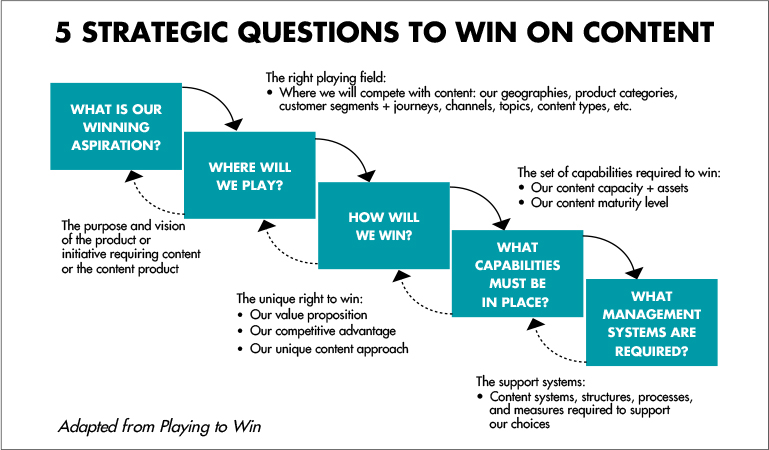
Figure 5.1: Five key content strategy questions
Notice the arrows leading to and from each question? Those arrows reflect how answering these questions really works. You will likely answer some, think about the consequences, change your answers, and then change the answers that depend on those previous answers, and… you get the idea. The answers to these questions are interrelated, so iterating your answers is normal, even good.
Let’s walk through these core questions and important supporting questions so that you can start to use them.
What Is Our Winning Aspiration?
This answer should factor in your content vision, as we discussed in Chapter 3, and your business goals. For example, the foot health retailer I mentioned aspired to be the go-to lower-body health outfitter, or the REI of lower-body health. This aspiration crystallized the retailer’s desire to be a trusted advisor and to increase sales responsibly.
Where Will We Play?
This question drives you to consider the right playing field—the place to compete where you have the best chance to win. As our world becomes increasingly digital and our relationships with customers grow longer, we face many potential places to make a content play. We can play in myriad channels, touchpoints, and formats, such as our website, in mobile applications, on social media sites, in print, on kiosks and digital signage, in voice applications such as Alexa, in games and virtual reality, and many more. We also have the opportunity to play in many stages or phases of the customer relationship, as we talked about in Chapter 4. While it might be tempting to compete on all of these “fields,” the reality is that you will have to be selective. Even Serena Williams does not play in every professional tennis tournament. And even Amazon still does not make a big play in content to educate customers before and after a sale—the kind of content our successful foot health retailer developed.
The analysis you do, as explained in Chapter 4, will go a long way toward informing your answer to this question and the questions that follow. Additionally, as you start to answer the following questions, you will realize quickly why you have to carefully select where to play.
How Will We Win?
Another way of thinking about this question is “What gives us the unique right to win?” Answering this question should consider and potentially synthesize your value proposition, your competitive advantage, and your unique content approach. For example, most companies and organizations have a tremendous amount of expertise in a number of subjects. A medical technology company cannot operate without expertise in both medicine and technology, for example. That expertise is a potential competitive advantage, enabling a company to create more credible, specialized, or unique content.
As another example, Tennessee Valley Authority (TVA) has accumulated since its founding, in 1933, a wealth of visual content assets, from photographs to videos to diagrams, that most companies and organizations do not come close to possessing. TVA has embraced using these visual assets to tell unique educational stories about their energy plants, their approach to environmental stewardship, their involvement in economic development, and much more (Figure 5.2).
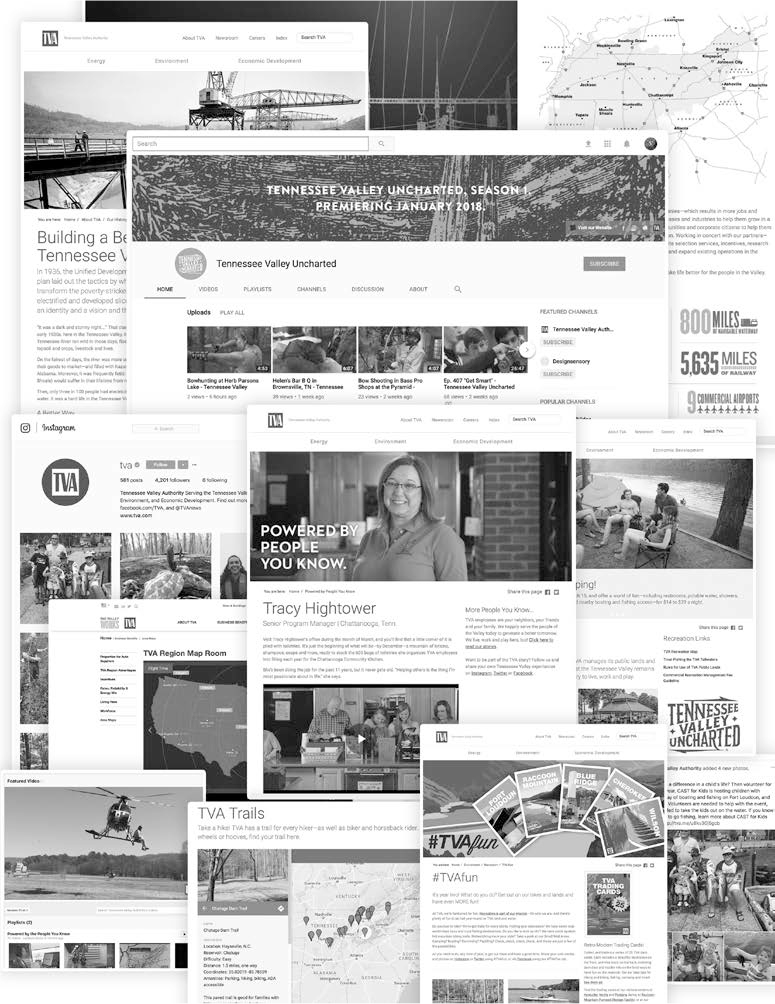
Figure 5.2: Tennessee Valley Authority possesses a unique repository of visual content assets.
As a different example, FitBit has a special relationship with its customers that is mediated by unique touchpoints, such as its watch and mobile application. FitBit can take advantage of what I call “coachable moments”—where a customer has succeeded, failed, or hit a significant milestone toward a health goal—with content. And FitBit does. FitBit provides immediate messages to address the moment and guides customers to more in-depth advice and guidance (Figure 5.3).

Figure 5.3: FitBit takes advantage of coachable moments in its unique relationship and touchpoints with customers.
As you consider your unique right to win on content, review your analysis and look for indicators of your unique
Expertise
Brand values, characteristics, or personality
Existing content assets
Relationship and touchpoints with customers
Gaps in competitive content offerings
Additionally, remember that in content your competitors are not only your business competitors but also potential sources of pertinent content. For example, the niche foot retailer was competing not only with other online shoe stores but also with other sources of health content. FitBit competes not only with other fitness watches but also with other sources of fitness, wellness, and performance content, such as Under Armour’s myFitnessPal.
Now let’s turn to questions about making the content strategy happen.
What Capabilities Must Be in Place?
Just as Serena Williams could not build a match strategy around a serve if she did not have the ability to serve exceptionally well, so you cannot build a content strategy without having the related content capabilities. This question turns attention to your content capacity and maturity level and even more attention to your content assets. And if you have gaps in your capabilities, the question becomes “Are we willing to close these gaps so we can execute our strategy? Or do we need to adjust our strategy to account for these gaps?”
For instance, companies ranging from Red Bull to TD Ameritrade have created in-house studios that give them the ability to offer rich editorial and educational content. Other companies taking this path include Marriott, American Express, and REI. If your company is not willing to make that kind of commitment, then you need to closely consider how you will adjust and adapt existing capabilities to achieve your strategy. For example, I worked with a credit monitoring company on developing a robust content strategy for consumers. We discovered that even though the company had little content capability in the consumer side (B2C) of the business, the business side (B2B) of the company possessed some useful capabilities. As a result, we explored how to use those capabilities in support of the consumer content strategy.
What Management or Operational Systems Are Required?
This question goes further into sustaining your content strategy. Consider what content management technology, management processes, and measures you have or will need. For example, we worked with a telecommunications and entertainment conglomerate on a personalization-driven content strategy, such as providing highly relevant offers and content suggestions. In the course of fleshing out the strategy, we discovered that even though the company possessed a wealth of customer data and a new, robust content management system, their systems lacked integration and alignment. At the same time, their content was not structured in their content management system at the right level of granularity. The content was mostly composed of pages and documents, not of components (or chunks) that could be extracted and reused. The telecommunications and entertainment company realized they had to fix these systems before they could embrace the content strategy they desired. (For more about changing your systems, see Section V.)
In addition to considering how your systems will need to change to support your content strategy, start to think about how you will measure the success of your content strategy. I discuss measures more in depth in Chapters 8 through 11, but the sooner you explore potential ways to measure the impact of your content strategy, the better.
When you have answers that you and your team or stakeholders are comfortable with, you can move forward with your content strategy. Or you can explore options and test concepts to further refine your content strategy.
Explore Options and Test Concepts
A content strategy can seem abstract and, consequently, lend itself to wide interpretation. What does being the REI of lower-body health really mean, for example? Before you commit to a content strategy, you can develop concepts that illustrate different options, and then test those options with your customers or users. For example, we worked with the niche foot health retailer to test options that represented differences such as voice, style, topics, layout, product merchandising, and more. The feedback we gained helped the retailer confirm that the content strategy was likely to succeed and refine the strategy. For example, the testing revealed an overwhelming preference for a friendly and accessible voice (Figure 5.4).
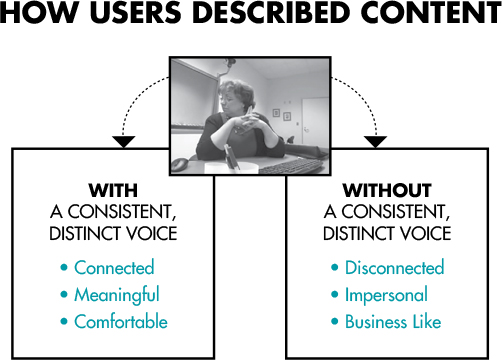
Figure 5.4: A foot health retailer tested options before fully committing to a content strategy.
Two Tips for Large Organizations
I’ve worked with large private and public companies, including six of the Fortune 50. In my experience, the following two tips can help as you work to define content strategy.
You Need More Than One Content Strategy
With every business function going digital, you likely need a content strategy for each function, such as marketing and support. The exact combination of content strategies you need will vary from organization to organization, but the need for more than one content strategy is the same. You can start by picking a function or experience to develop a content strategy using Chapters 3 through 5. And then you can repeat the approach in other areas.
Content Strategies Work Best When Aligned and Unified by a Content Vision
People who love to “geek out” on content sometimes talk about a unified content strategy. Most people who say this are referring to reusing content in multiple channels or touchpoints. I find that content reuse is a valuable tactic, but it alone is not a strategy. I also find that a single content strategy for an enterprise does not make a sense (see the previous tip). However, I do find that a large company benefits from a vision that unifies the content strategies. For example, I recently worked with a credit monitoring company that viewed content as critical to transforming the experience the company gave consumers. We developed a set of five content strategies unified by a core content vision, as you can see summarized in Figure 5.5. This vision has helped people involved in the different content strategies understand how their effort fits into the overall consumer content vision.
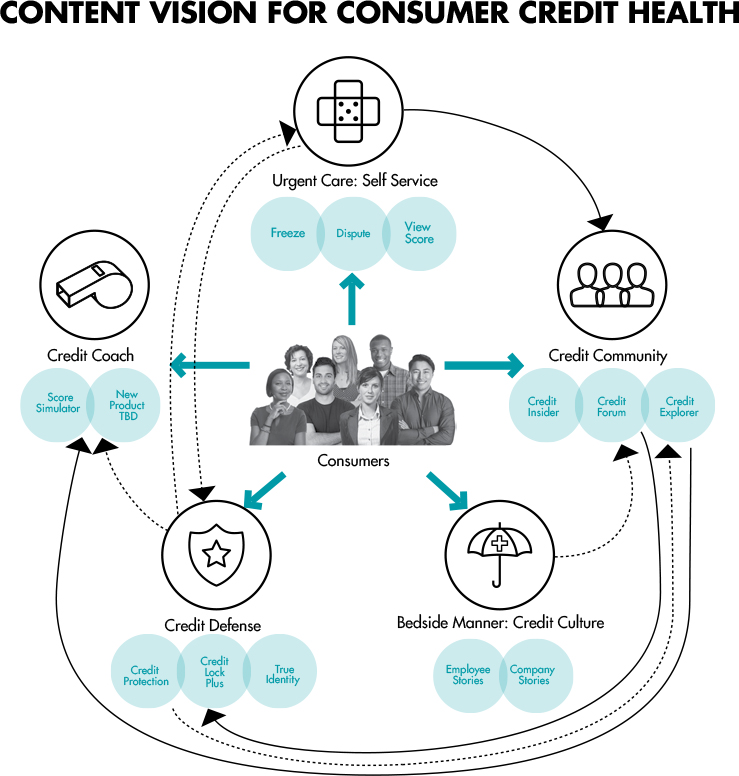
Figure 5.5: A sample content vision that unifies consumer content strategies under the vision of credit health
Two Tips for Small and Medium Organizations
If you work for a small business or organization, keep these tips in mind.
Your Size and Focus Is an Advantage
You might be tempted to think that you can’t compete, especially against organizations larger than yours. Think again. Skim the tips I just shared for large companies. If it sounds like big organizations have much to coordinate, that’s because they do. Making a simple editorial decision might take three weeks for them and one day for you. Large companies are often slow and sprawling in their approach to content. If you can be nimble and focus on your niche the way the spinning studio Burn and the foot health retailer did, you will have a significant advantage over any competitor.
Your Lack of Resources Makes Content Strategy Even More Critical
You do not have money to burn, so use the money you have wisely. Define and test the content strategy before you create, buy, or curate content assets. For example, we helped the Rack Athletic Performance Center, a small business in Atlanta, crystallize its content niche, especially topics and formats, so that a variety of its employees could contribute supporting content, such as articles or workshops, efficiently (Figure 5.6).
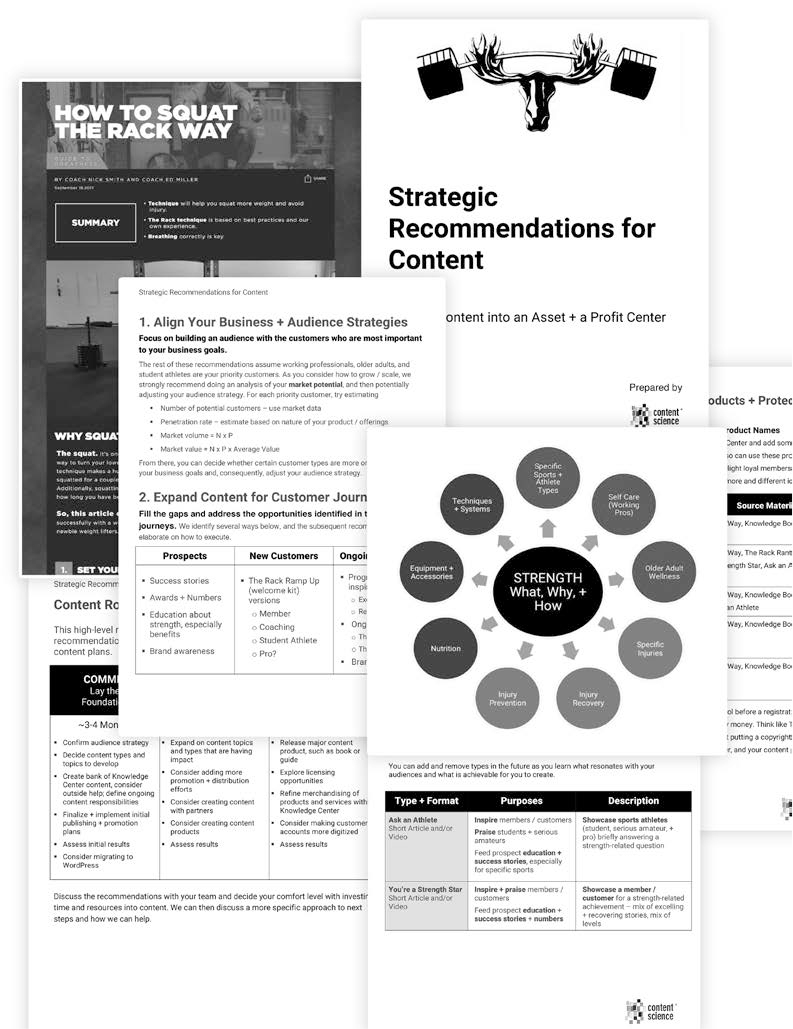
Figure 5.6: A Sample from the Rack’s 10-point content strategy
Once you have a potentially winning content strategy, what’s next? One important step is planning to offer effective and influential content. In Section III, we explore how to make the content supporting your strategy as compelling as possible.